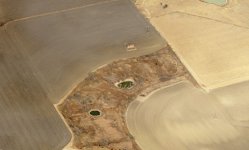warhammer
Gold Member
There are two fields on my land that have been row cropped yearly for decades. Field sizes are 5 and 24 acres.
For the last 7-8 years crops have rotated mostly between corn and cotton with maize being grown this year.
The farmer who leased it for at least the last 10 years just let me know he is semi-retiring and will not be looking to renew the lease.
I want to convert the fields to pasture. At this point the maize has been harvested and the fields have the remaining 2-3 foot high stalks of the maize plants.
What do I need to do from here to get the fields ready for seeding grass?
For the last 7-8 years crops have rotated mostly between corn and cotton with maize being grown this year.
The farmer who leased it for at least the last 10 years just let me know he is semi-retiring and will not be looking to renew the lease.
I want to convert the fields to pasture. At this point the maize has been harvested and the fields have the remaining 2-3 foot high stalks of the maize plants.
What do I need to do from here to get the fields ready for seeding grass?



